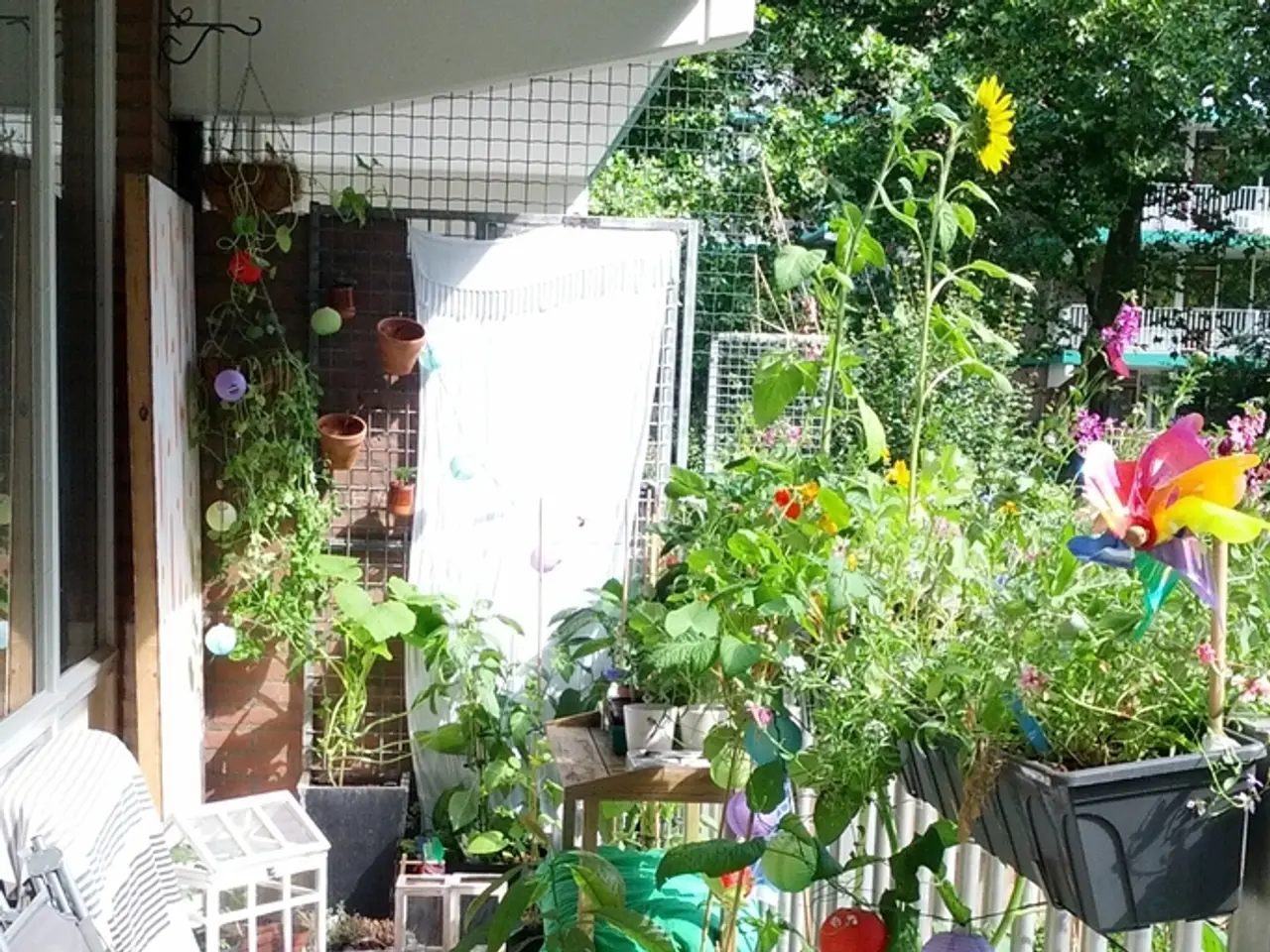Nature-Inspired Bedroom Arrangements Enhancing Wellness: Biophilic Bedroom Designs that Bolster Wellbeing
In the pursuit of a peaceful and rejuvenating sleep environment, biophilic design offers a compelling solution. This design philosophy, popularized by Erich Fromm and Edward O. Wilson, fosters a deep connection with nature by incorporating elements that mimic the outdoors.
The practical application of biophilic design in a bedroom setting involves integrating natural elements that promote relaxation, mental well-being, and a connection to nature.
Living Greenery and Calm Atmosphere
Incorporating plants of varying sizes and textures brings in living greenery, improving air quality and creating a calming atmosphere. Low-maintenance options such as snake plants, pothos, and succulents are suitable for bedrooms.
Maximizing Natural Light and Supporting Circadian Rhythms
Maximizing natural light or using full-spectrum grow lights not only enhances plant health but also supports circadian rhythms, aiding better sleep.
Natural Materials and Textures for a Cozy Environment
Using natural materials and textures like wooden furniture, bamboo blinds, linen or cotton textiles, and terracotta pots creates a grounded, cozy environment. These materials add warmth and tactile appeal, reinforcing a nature-inspired bedroom.
The Soothing Presence of Water
Incorporating water features such as small fountains or aquariums engages multiple senses, fostering tranquility and stress reduction through the soothing presence of water sounds.
Nature-Inspired Shapes and Patterns
Bringing in nature-inspired shapes and patterns through furniture with soft, rounded edges and decorative textiles or wallpapers with natural motifs (leaves, wood grain) mimics organic forms and enhances the visual connection to nature.
Calming Colors Influenced by Nature
Using calming colors influenced by nature—sage green, warm browns, and neutral earth tones—creates serene, restorative ambiances ideal for rest and recharge.
These implementations transform the bedroom into a sanctuary that nurtures mental clarity, reduces stress and anxiety, and improves overall sleep quality by re-establishing a connection to nature within an indoor environment.
Balancing Organization and Complexity
A biophilic bedroom should find a balance between organization and complexity. Organic linen duvet covers made from European Flax, known for their hypoallergenic and tactile properties, can be used. The bed, the natural focal point in a biophilic bedroom, can be emphasized with Scandinavian-style duvet covers.
Stephen Kellert, a professor at Yale University, is one of the pioneers of biophilic design. By embracing its principles, we can create a space that not only serves as a haven for rest but also contributes to our physical and emotional health.
References: [1] Biophilic Design: The Architecture of Life. Kellert, S. R., & Heerwagen, J. (2005). [2] Biophilic Design: A Guide to Indoor-Outdoor Infrastructure. W. S. Grant, S. R. Kellert, & L. D. Heerwagen. (2018). [3] Biophilic Design: The Future of Building, Place, and the Human Spirit. Kellert, S. R., & Calabrese, L. (2015). [4] The Biophilic Office: Supporting Human Health and Well-Being. W. S. Grant, S. R. Kellert, & L. D. Heerwagen. (2016). [5] The Biophilic City: Integrating Infrastructure, Urban Design, and Nature. W. S. Grant, S. R. Kellert, & L. D. Heerwagen. (2018).
In the realm of home-and-garden and lifestyle, biophilic design is extended to bedrooms for health-and-wellness benefits, promoting mental-health and relaxation. This includes incorporating plants, maximizing natural light, using natural materials, and featuring water elements to create a calming atmosphere. To achieve balance, organic linen duvet covers can be used, emphasizing the bed as a natural focal point. Biophilic design, pioneered by Stephen Kellert, nurtures mental clarity and overall sleep quality while contributing to physical and emotional health. [References: 1, 2, 3, 4, 5]




